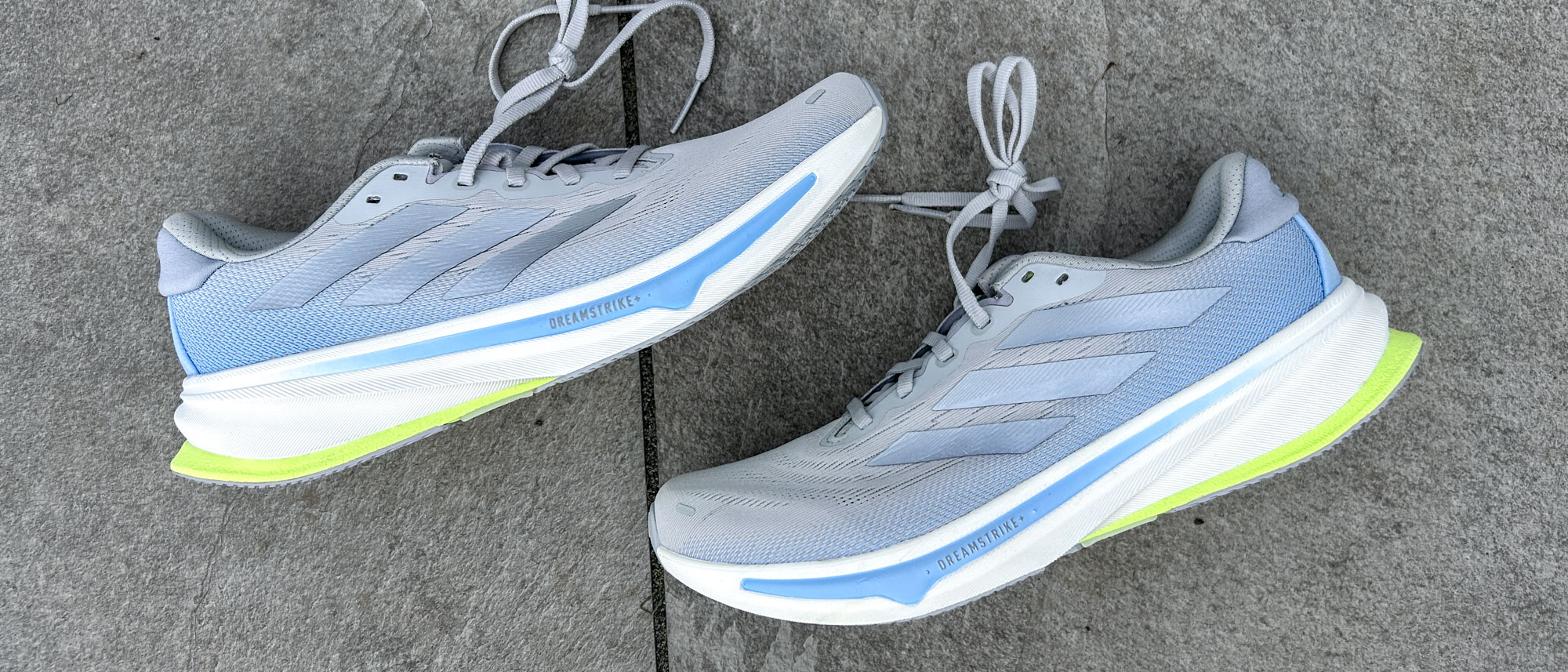Tom's Guide Verdict
The Adidas Supernova Rise 2 is a good daily trainer that provides a balance of comfort for easy runs and lightness for faster ones. It’s not the most exciting shoe, however, and there are more versatile and cushioned options that have more appeal.
Pros
- +
Cushioned but fairly lightweight
- +
Good value
- +
Improved upper
Cons
- -
Not as comfortable as others
- -
Foam isn’t the liveliest
Why you can trust Tom's Guide
There’s not much wrong with the Adidas Supernova Rise 2, and I enjoyed using it as a daily trainer that has a nimbler feel than many running shoes thanks to the current trend towards max-cushioned designs.
However, it doesn’t deliver the same level of performance as the best running shoes, and I think that whatever you’re looking for in a trainer, there are better options available.
In my Adidas Supernova Rise 2 I’ll explain why I think it’s a good shoe but not a great one, and give alternatives that I think outperform it in various ways.
Adidas Supernova Rise 2 review: price and availability
The Adidas Supernova Rise 2 launched in December 2024 and costs $140 in the U.S, and £130 in the U.K., the same price as the previous model of the shoe. It’s similar in price to daily trainer rivals from other brands like the Nike Pegasus 41, Hoka Clifton 10 and Asics Novablast 5, and a little cheaper than the Adidas Adizero Evo SL and Adidas Supernova Prima trainers.
Adidas Supernova Rise 2 review: design and fit
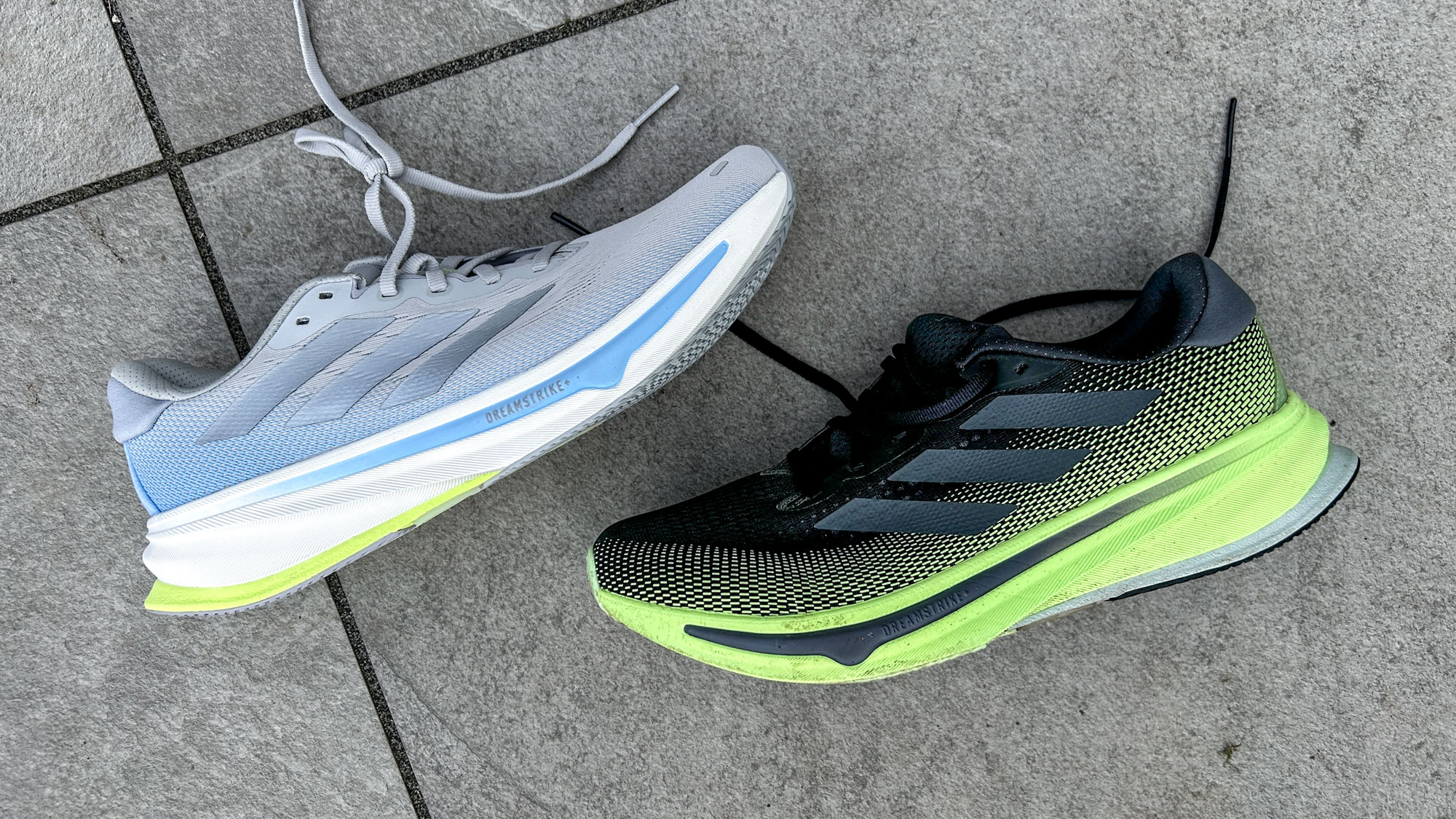
The Adidas Supernova Rise 2 is currently available in 11 colors including the Grey Two / Matte Silver / Hi-Res Yellow shoe I tested. I found that it fit me well in my normal running shoe size, with a wider and roomier toe-box than some of the shoes in the Adidas Adizero range.
Despite having a stack height of 36mm at the heel and 26mm at the forefoot, the Supernova Rise 2 is actually less cushioned than most daily trainers these days. The 10mm drop adds to this, reducing the amount of cushioning under the forefoot in particular.
The relatively low midsole stack means that the Supernova Rise 2 is quite lightweight at 9.5oz in my US men’s size 9.5. With many daily trainers having midsole stacks over 40mm at the heel they often end up weighing 10-11oz.
Upper
The upper on the Supernova Rise 2 is a lightweight engineered mesh that’s thinner and more breathable than the material used on the original Supernova Rise. This makes the shoe more comfortable to run in and also results in a drop in weight of around half an ounce in my size.
There is still padding around the collar and tongue on the shoe and the fit is secure with no slippage at the heel or looseness around the midfoot.
Midsole
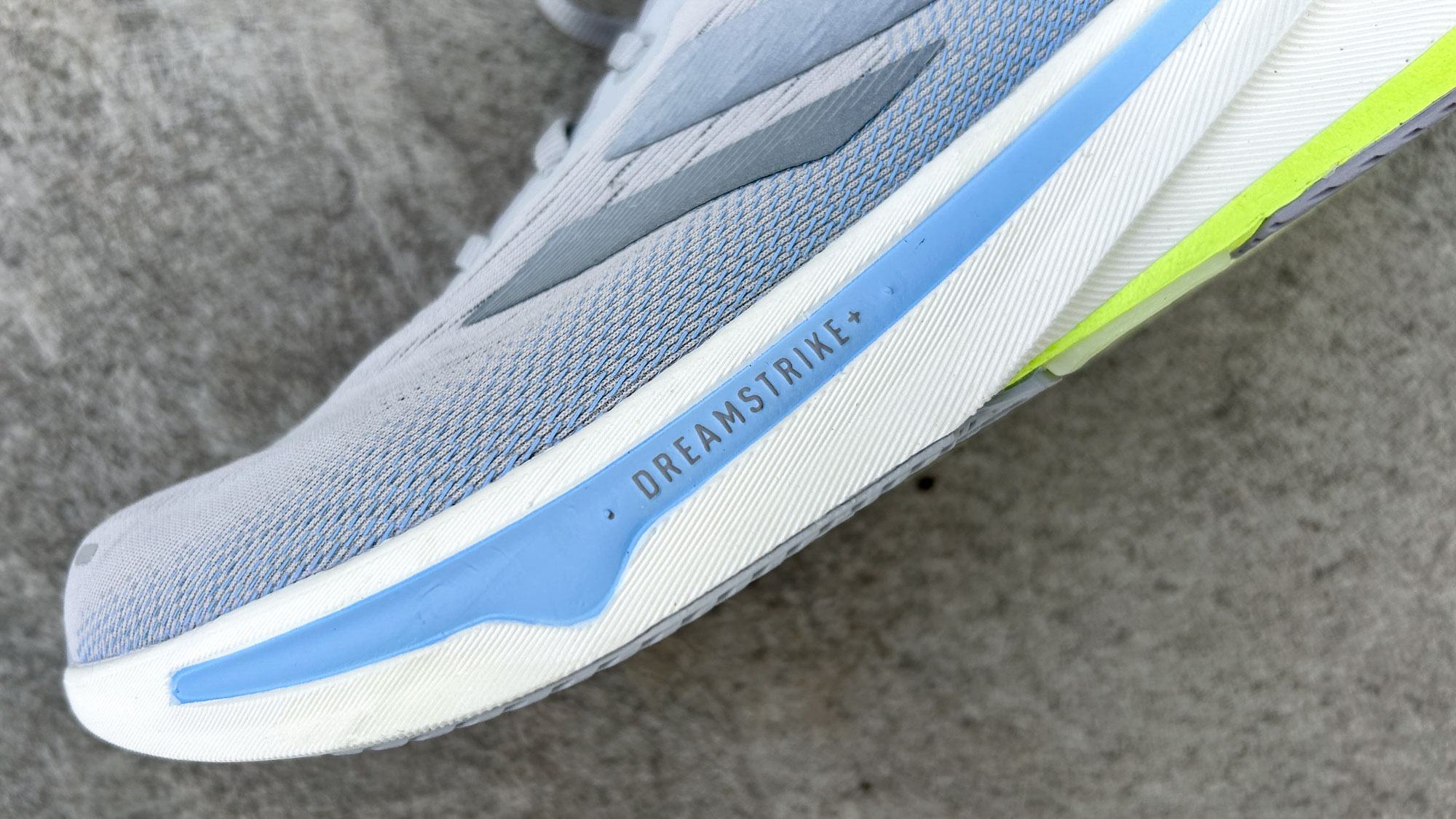
The midsole has the same setup as the Supernova Rise with a stack of Dreamstrike+ cushioning that sits above a series of EVA foam rods that add stability.
Dreamstrike+ is a PEBA-based foam, which is the material used in many of the best carbon plate running shoes, but it’s a denser and less energetic foam than those used in racing shoes.
This means it will be more durable and stable for daily training, but also means the Supernova Rise 2 has a fairly dull ride, and it’s not particularly responsive at faster paces.
Outsole
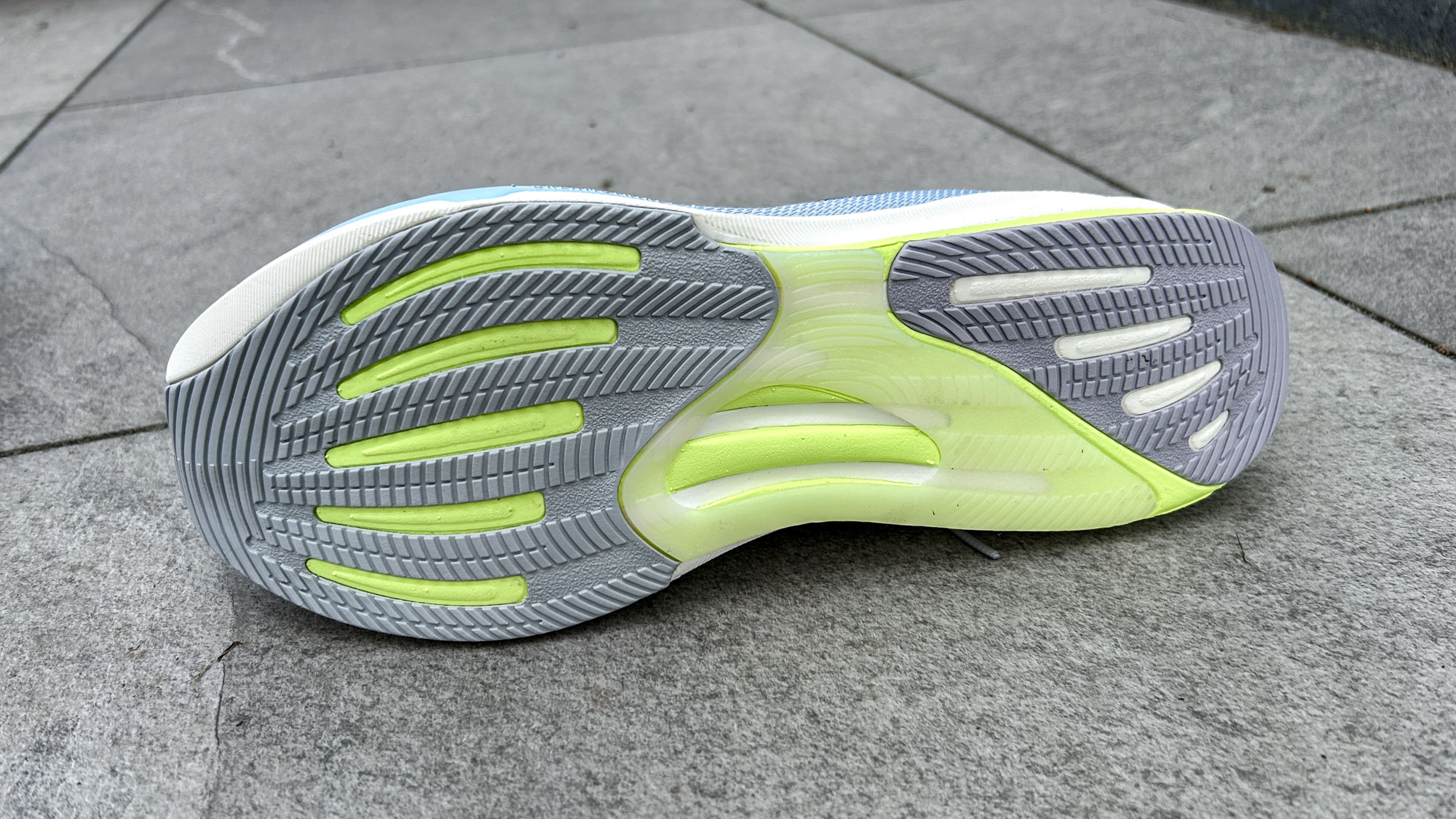
Adiwear rubber is used on the heel and forefoot of the Supernova Rise 2, with a softer, slightly see-through rubber used to cover the midfoot.
I found that the shoe gripped well for me on pavements and also light, dusty trails, and the Adiwear rubber seems durable with no signs of wear and tear yet.
Adidas Supernova Rise 2 review: running performance
Aside from the improvements to the upper, the Adidas Supernova Rise 2 has a similar feel on the run to the original Supernova Rise, which I have also tested.
It’s not the most dynamic shoe, with the foam in the midsole mostly working to dampen the impact of running rather than providing a lot of energy return, but it’s quite light and nimble, which I appreciated when running at faster paces in the shoe.
Balanced is definitely the word that comes to mind for me when describing the Supernova Rise 2. It’s not exactly soft or firm, and it’s not highly cushioned but also not as nimble and stripped-back as a more speed-focused shoe.
As a result it will work well for runners who like to use one shoe for everything if you prefer a more direct ride. The Supernova Rise 2 offers more ground feel than max-cushioned shoes, especially under the forefoot, and it’s narrower and more agile too.
However, if you use a mix of shoes in a rotation, I’d say you’d also have a better option for your run than the Supernova Rise 2.
It’s not as comfortable for easy and long runs as more cushioned shoes, or as energetic and fast for workouts as a plated trainer or even a lighter shoe with a springier midsole like the Adidas Adizero Evo SL.
Should you buy the Adidas Supernova Rise 2?
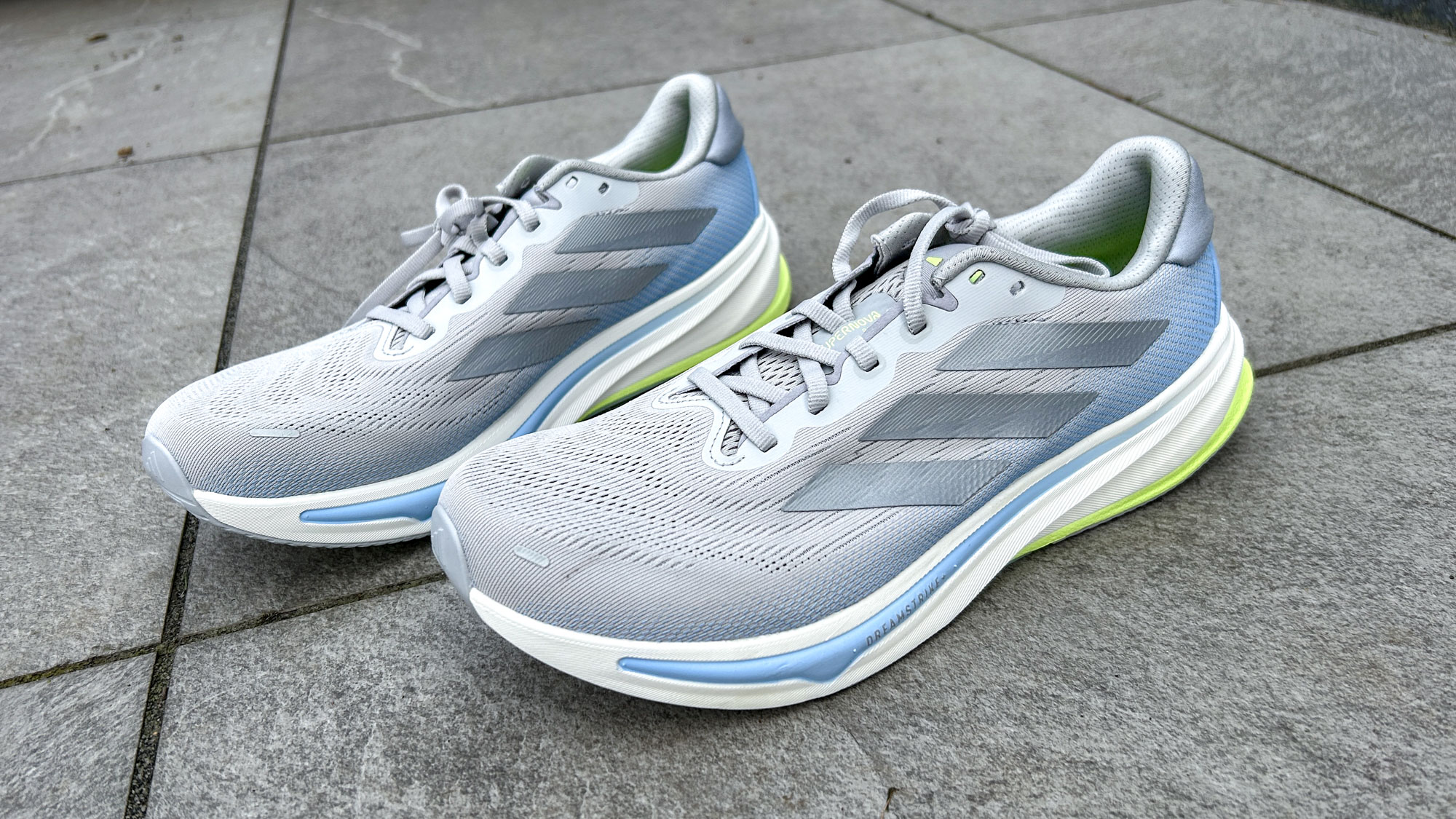
I wouldn’t pick up the Adidas Supernova Rise 2 for my own running shoe rotation. It’s a solid shoe and good value, and those who like higher-drop trainers with more ground feel than max-cushioned shoes might consider it, but I think there are better options whatever you’re looking for.
If you have a rotation then I’d prefer to be in a more cushioned shoe for easy runs and a faster one for workouts, but more importantly there are all-rounders that offer more comfortable and responsiveness for fast runs.
The Adidas Adizero Evo SL is one such shoe at around the same price. It’s less stable than the Supernova Rise and more speed-focused, but I still enjoyed it for easy runs and it has a softer, springier midsole for fast efforts.
If you do want more of a stable daily trainer than the Evo SL, then I’d opt for the Asics Novablast 5 or Hoka Clifton 10 ahead of the Supernova Rise 2, unless you prefer the lower stack of the Adidas shoe.
In that case, then I’d still consider the Puma Velocity Nitro 3 ahead of the Supernova Rise 3. It’s a little cheaper for one, has a better outsole and a more enjoyable ride thanks to its livelier midsole foam.
You might also find the original Supernova Rise in a sale and while the new shoe is a small upgrade thanks to the improved upper, I’d opt for the older one if the right deal came along.

Nick Harris-Fry is an experienced health and fitness journalist, writing professionally since 2012. He spent nine years working on the Coach magazine and website before moving to the fitness team at Tom’s Guide in 2024. Nick is a keen runner and also the founder of YouTube channel The Run Testers, which specialises in reviewing running shoes, watches, headphones and other gear.
Nick ran his first marathon in 2016 after six weeks of training for a magazine feature and subsequently became obsessed with the sport. He now has PBs of 2hr 27min for the marathon and 15min 30sec for 5K, and has run 13 marathons in total, as well as a 50-mile ultramarathon. Nick is also a qualified Run Leader in the UK.
Nick is an established expert in the health and fitness area and along with writing for many publications, including Live Science, Expert Reviews, Wareable, Coach and Get Sweat Go, he has been quoted on The Guardian and The Independent.
You must confirm your public display name before commenting
Please logout and then login again, you will then be prompted to enter your display name.
